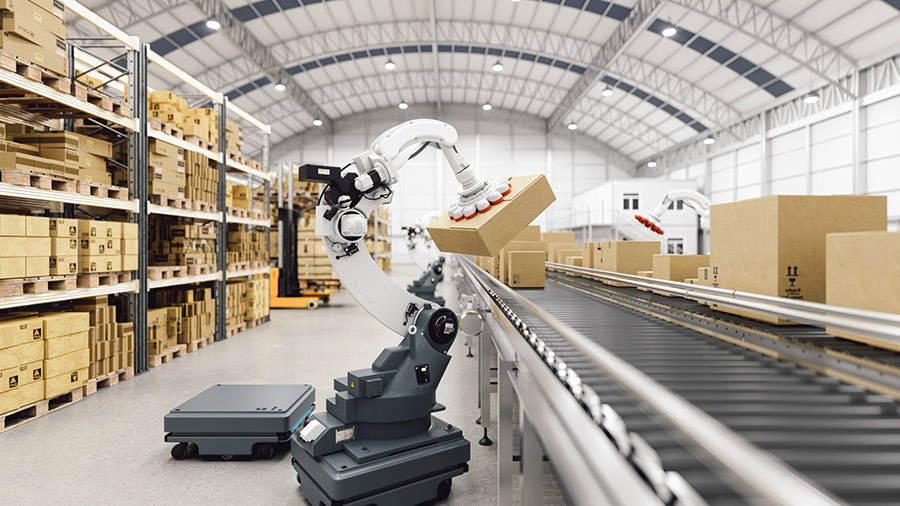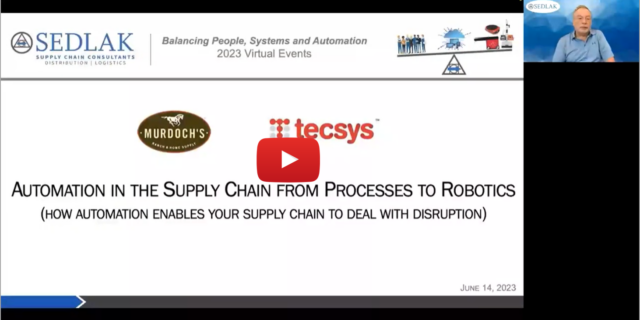Supply Chain Agility: Dealing with the Challenges of Living in Interesting Times (Part 2 of 3)
February 25, 2022 By: Louis J. Cerny | Topics: Automation & Robotics, Supply Chain
As noted in my previous blog, the phrase “May you live in interesting times” can be viewed as a blessing or a curse. Regardless of how it is interpreted, we have no choice but to deal with the challenging times we are living in.
As supply chain consultants, the Sedlak team is fortunate to be able to partner with our clients and vendors to address today’s challenges with an ever-increasing universe of equipment and information system options that allow our clients to meet their challenges head-on.
The lack of labor to meet the needs of increased customer demand as well as increased SLA requirements can only be met through improved operational practices and higher levels of mechanization. This blog post will focus on several of the automation options that are part of a growing list of options to reduce labor requirements while increasing productivity and customer service.
Automation Options
In my four decades as a supply chain professional, I have never seen the level of automation options that are currently available and growing every day. The alphabet soup of options includes AGVs, AMRs, and GTP. Within each category the options are growing exponentially.
While this technology has been around for decades, AGVs were primarily dedicated to horizontal movement between fixed points. That is no longer the case. Virtually any type of mobile equipment is or will soon be adapted to be either a hybrid that can operate either manned or autonomously or fully autonomous. This increased capability has been enabled through improved navigation systems thanks to optimized vision and control systems and AI. A recent project we worked on was looking to replace long drives with AGVs, and while the initial thought was to use tuggers, further analysis determined that AGV reach trucks were the better solution due to their flexibility to not only transport a load but to interface with varying heights of pick-up points and stack and potentially move pallets directly into rack. When considering implementing AGVs into an existing operation, be sure to review travel paths to assure adequate aisle space. AGVs typically require four feet plus the load width for single direction travel and six feet plus two times the load width for two-way travel.
Just like AGVs, AMRs come in a variety of shapes and sizes. The one thing they have in common is that they save labor due to reduced walking between picks and therefore keeping pickers picking. In addition, order accuracy is optimized due to the system capabilities to display the item, to be picked, on a screen along with the ability to scan to confirm the pick. Two additional benefits include the fact that many offer their AMRs as a RAAS. This allows you to treat them as an expense, just like labor, and allows them to flex to meet demand. The simplicity of training new associates and part-time labor is also a significant benefit of AMRs.
Because of the flexibility of AMRs, applications in replenishment, returns processing and VAS are also definitely worth exploring. As one of the few mechanization options that can be implemented prior to peak 2022, AMRs are certainly worth your consideration.
Once again, the options abound. Goods to Person (GTP) options generally have a shuttle to retrieve totes or cartons of products from condensed storage in rack and presents the product to a picker to fulfill an order. Walking is eliminated and pick rates can be 300 to 600 lines per hour. Since GTP is a fully automated system, it does have a fixed maximum throughput capability. With improved vision and gripping technology, this option is quickly morphing from GTP to GTR (Good to Robot). Current demand for GTP systems is resulting in lead times of 12 to 18 months from receipt of order through manufacturing, installation, system integration and go-live.
One critical factor with GTPs is selecting the SKUs to service from the system. It is best suited for medium movers. An analysis of your SKU velocities is critical to the sizing and cost of the system.
Conclusion
Today’s supply chain issues are definitely a blessing and a curse. We are definitely living in INTERESTING TIMES. Let’s rise to the challenge.
These topics and more will be presented during our Supply Chain Agility 2022 Virtual Conference on March 15th and 16th. During the conference, leading suppliers will present with users the use cases and benefits of these systems along with critical lessons learned.
Read Parts 1 and 3 of this series by clicking on the links below.
Supply Chain Agility: A Challenge or an Opportunity? (Part 1 of 3)
Supply Chain Agility Through the Use of Financial and Labor Management Software (Part 3 of 3)





